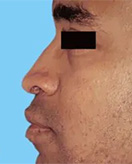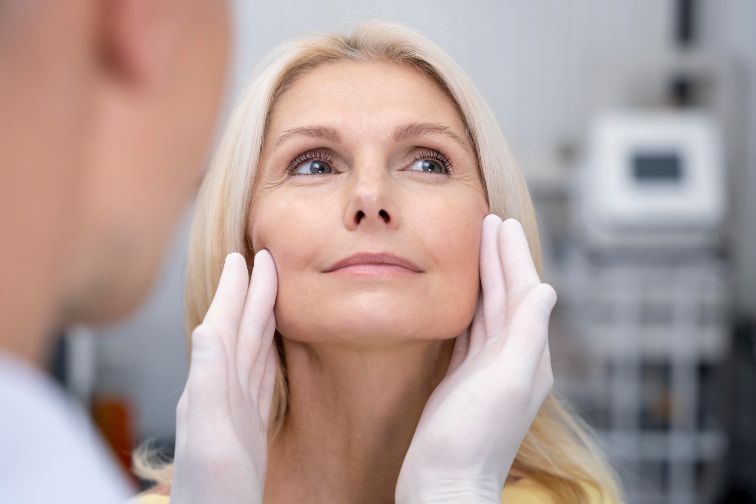Undergoing a facelift surgery can be an exciting and transformative experience. Whether you’re seeking to reverse the signs of aging, restore facial symmetry, or enhance your natural features, facelift surgery offers a rejuvenating solution. However, it’s essential to remember that the journey to your desired outcome extends beyond the operating room. Understanding the recovery process is crucial to ensure a smooth and successful transition toward your desired results.
Facelift recovery is a multi-stage process that involves various physical and emotional changes as your body heals and adjusts. While every individual’s experience may vary slightly, there are four key stages that most patients go through during their recovery journey. By familiarizing yourself with these stages and knowing what to expect, you can better prepare yourself for each phase and embrace the journey toward a refreshed youthful appearance.
Contents
- 1 Stage 1: The Initial Days – Navigating the Immediate Post-Op Period
- 2 Stage 2: Swelling and Bruising – Understanding and Managing the Effects
- 3 Stage 3: Healing and Progress – Celebrating Visible Improvements
- 4 Stage 4: Long-Term Recovery – Maintaining and Enhancing Your Results
- 5 Essential Do’s and Don’ts for Optimal Facelift Recovery
- 6 The Role of Proper Nutrition and Skincare in Facelift Recovery
- 7 Common Questions and Concerns About Facelift Surgery Answered
- 8 Celebrating the Final Outcome: Embracing Your New, Refreshed Look
Stage one of recovery marks the immediate post-op period, which is crucial for laying the foundation of successful healing.
To get the best results, pay attention to the directions your surgeon gives you during this phase.
In the initial days following facelift procedures, you can expect some swelling, bruising, and discomfort. These are normal and temporary effects of the facelift surgery. Your surgeon may prescribe pain medication to manage any discomfort.
It’s recommended to keep your head elevated during sleep and rest as much as possible to facilitate healing.
It’s also important to avoid any strenuous activities, as this can hinder successful recovery. Following these guidelines and maintaining open communication with your surgeon will help you navigate the initial days of recovery with confidence.
Stage 2: Swelling and Bruising – Understanding and Managing the Effects
Stage two of facelift recovery is characterized by bruising and swelling, which are common after undergoing a cosmetic surgical procedure.
It’s crucial to realize that these side effects are inevitable during the healing process and will eventually go away. Swelling is typically more pronounced during the first week after facelift surgery, gradually subsiding in the following weeks. To minimize swelling, your surgeon may recommend applying cold compresses to the affected areas, as this can help reduce inflammation.
It’s important to avoid applying ice directly to the skin and instead use a cloth or a thin towel as a barrier.
Bruises are also typical and range from person to person in terms of severity and duration.
Additionally, following a nutritious diet rich in vitamins and minerals can aid in the surgery performed and reduce the appearance of bruising. Remember to be patient during this stage, as swelling and bruising will gradually fade, revealing the desired results of your facelift.
Stage 3: Healing and Progress – Celebrating Visible Improvements
Stage three of facelift recovery is an exciting phase as you begin to witness visible improvements and signs of healing. During this stage, the initial swelling and bruising will significantly subside, allowing you to appreciate the positive changes in your appearance.
As the healing progresses, you may feel tightness of your skin, with a more youthful and rejuvenated appearance. It’s important to continue following your surgeon’s post-operative care instructions, including any skincare regimen or exercises recommended to promote optimal healing.
Although you may be eager to resume your regular activities, it is important to remember the importance of proceeding gradually and refraining from engaging in strenuous activities that could potentially affect the desired outcome. Your surgeon will provide guidance on when it is safe to resume exercises and other activities.
It’s also important to protect your skin from excessive sun exposure during this stage by wearing sunscreen and hats when outdoors. By celebrating the visible improvements and maintaining a diligent post-operative routine, you can continue to support the healing and enhance the long-term results of your facelift.
Stage 4: Long-Term Recovery – Maintaining and Enhancing Your Results
Stage four of facelift recovery focuses on the long-term maintenance and enhancement of your results. By this stage, the majority of swelling should have subsided, and you should be enjoying the full benefits of your facelift.
It’s essential to bear in mind that in the upcoming months, your skin and underlying tissues will continue to heal and adjust.
To preserve your results and prolong their longevity, it is crucial to establish a personalized skincare routine that caters to your specific requirements. This may include gentle cleansing, moisturizing, and the use of recommended skincare products or treatments.
Your body’s natural healing processes will also be supported by drinking plenty of water and obtaining adequate restful sleep.
Lastly, incorporating a self-care regimen and maintaining a positive mindset can not only aid in preserving your results but also enhance your overall well-being. Remember to schedule regular follow-up appointments with your surgeon to monitor your recovery progress and address any concerns that may arise.
You can reap the long-term rewards of your facelift procedure and continue to feel confident in your restored appearance by putting self-care first and leading a healthy lifestyle.
Essential Do’s and Don’ts for Optimal Facelift Recovery

Optimal recovery requires adherence to certain do’s and don’ts to ensure the best possible outcome. Let’s start with the do’s.
First and foremost, do closely follow the post-operative instructions provided by your surgeon. These guidelines are tailored to your specific needs and play a crucial role in supporting a successful recovery.
Do take any prescribed medications as directed, including pain medication and antibiotics, if prescribed.
Additionally, do keep your head elevated, especially during sleep, to reduce swelling and promote healing. Gentle facial massages, as recommended by your surgeon, can also aid in reducing swelling and improving circulation.
Don’t engage in any strenuous activities, such as heavy lifting or intense exercise, as these can interfere with the surgery performed and increase the risk of complications.
Avoid smoking and alcohol consumption, as they can hinder the healing process and have detrimental effects on your overall health.
It’s important to refrain from exposing your incision areas to direct sunlight and always apply sunscreen when going outside.
Lastly, don’t hesitate to reach out to us at Park Plaza Plastic Surgery if you have any concerns or questions about your recovery times.
The Role of Proper Nutrition and Skincare in Facelift Recovery
Proper nutrition and skincare play crucial roles in facilitating optimal recovery. The healing requires essential nutrients to support tissue repair and regeneration.
A well-balanced diet should be your top priority while you’re recovering. Incorporate plenty of fruits, vegetables, lean proteins, and whole grains into your meals to promote healing and provide your body with the necessary building blocks for healthy skin.
Additionally, staying hydrated is vital for overall skin health and recovery.
Alongside nutrition, implementing a consistent skincare routine can enhance the final results and maintain the results of your facelift. Avoid harsh or abrasive products that may irritate or disrupt the healing incisions.
Protecting your skin from the sun is also crucial during recovery. Apply sunscreen with a high SPF and wear protective clothing and hats.
Common Questions and Concerns About Facelift Surgery Answered
During the recovery times, it’s common to have questions and concerns.
One common concern is the duration of swelling and bruising. While each individual’s healing timeline may vary, swelling typically subsides significantly within a few weeks after the procedure.
Another frequently asked question is about the level of discomfort during recovery. It’s normal to experience some discomfort, which can be managed with prescribed pain medication. However, as the days pass, the discomfort usually diminishes.
Many individuals also wonder when they can return to their regular activities. You need to follow your surgeon’s guidance, avoid strenuous exercise for some time, and maybe commit to some light housework, to allow your incisions to heal properly.
Concerns about scarring are also common. Rest assured that skilled surgeons make incision sites in inconspicuous areas and take measures to minimize scarring. Over time, any visible scars typically fade and become less noticeable.
To learn more about what facelift can and cannot do for your appearance, please call (212) 750-9494 and schedule an appointment with our board-certified plastic surgeon Dr. George Lefkovits at Park Plaza Plastic Surgery Center in Manhattan, New York.

Celebrating the Final Outcome: Embracing Your New, Refreshed Look
As you reach the final stage of your recovery, it’s time to celebrate the remarkable transformation and embrace your new, refreshed look. You have come a long way since the initial post-op period, navigating through the stages of healing and witnessing gradual improvements.
Now, with your facelift surgery results fully realized, you can enjoy the benefits of a more rejuvenated, youthful appearance. Accept the growing self-assurance and confidence that come with appearing and feeling your best.
Whether it’s the reduction of fine lines and wrinkles, the restoration of facial contours, or an overall improvement in skin tightness and texture, your facelift has helped you achieve your aesthetic goals.
To extend the durability of your effects, keep up a healthy lifestyle, wear sunscreen, and continue to practice good skincare routines. Celebrate this milestone and step forward with a renewed sense of self, knowing that your new, refreshed look reflects the vibrant, confident individual you are.









